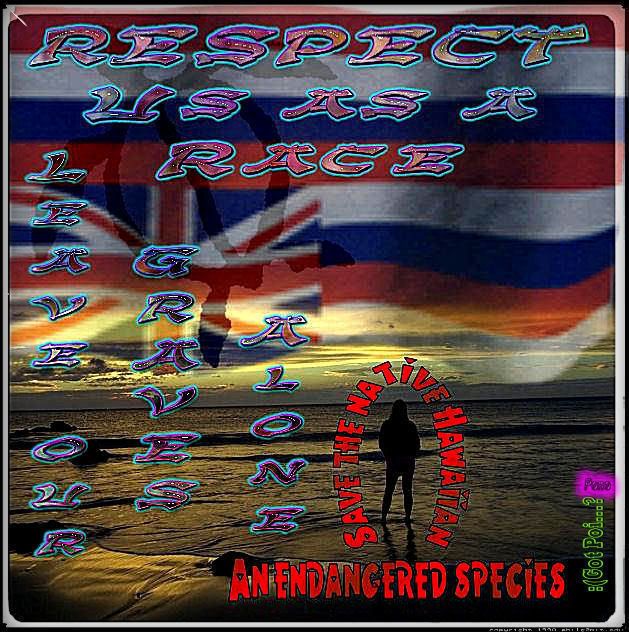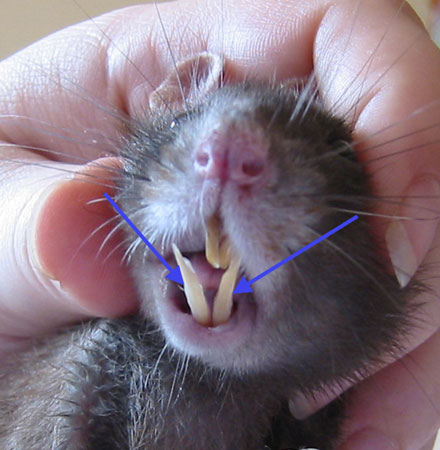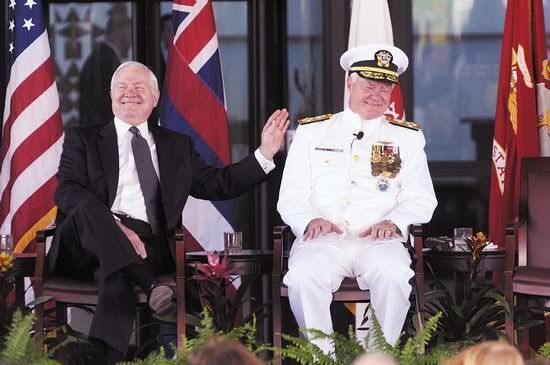
October 20, 2009
Burial council won’t sign rail pact
By Sean Hao
Advertiser Staff Writer
A government panel charged with protecting Native Hawaiian burials is opposing plans torun Honolulu's $5.5 billion rail line through Kakaako via HalekauwilaStreet.
The Oahu Island Burial Council has decided not to join other parties — includingthe National Parks Service and the Advisory Council on HistoricPreservation — in signing an agreement on mitigating the rail project'simpacts on historical, cultural and archaeological resources. Theorganizations are scheduled to sign the agreement tomorrow.
The burial council decision is largely symbolic and isn't expected to stopor delay the 20-mile elevated commuter train project, scheduled tobreak ground in December. But it does indicate the concern NativeHawaiians and others have that the rail project's current route willencounter problems with old burial sites.
"When it comes to the issue that we're concerned with, you picked one of theworst possible alignments," burial council member Kehau Abad toldtransit officials during a meeting last week.
Honolulu Mayor Mufi Hannemann wrote to the burial council on Oct. 13 urging thegroup to concur with the agreement. The city worked with the councilfor months to address concerns about the project's potential impact ontraditional Hawaiian burials, which are generally unmarked graves.
However, the administration was unwilling to alter the route from going throughan area that sits on a band of sandy deposits that's expected tocontain high concentrations of burials, according to the council. Thatroute was chosen by the Honolulu City Council in early 2007 based on astudy of various transit alternatives conducted a year earlier.
Some federal officials also have opposed a Halekauwila Street route, whichpasses the Prince Kuhio Federal Building, because of security concerns.
Burial council members said they should have been consulted and anarchaeological inventory survey should have been conducted beforeselection of a route through Kakaako. The current route will almostcertainly encounter buried human remains, which could delay the projectand drive up costs, Abad said during last Wednesday's meeting.
"What we're concerned about is the public is going to turn around and pointto us as the cause of those increases in costs (and) as the cause ofdelays," she said. "Beyond just us, they're going to turn to the wholeHawaiian community and say it's those Hawaiians who are increasing thecosts of this project for everyone. It is the Hawaiians who are holdingup progress .
"We're going to get blamed for something that we knew well in advance would have been coming, but nobody asked us," Abad said.
mauka route urged
The burial council is appointed by the governor and works to protect Hawaiian burial sites.The council maintains that a more mauka route for the rail line, alongKing or Beretania streets, would avoid subsurface sandy deposits likelyto contain burials.
City officials said they considered but discounted alternatives becauseother routes wouldn't generate enough ridership or would have greaterimpacts on adjoining properties.
The issue of how to deal with the discovery of iwi, or burial remains,arose at the Kakaako Walmart and Ward Villages projects and likelycould recur if the city proceeds with plans to build a 20-mile rapidtransit system linking East Kapolei to Ala Moana.
According to the city's 2006 study, there is a high potential of encounteringNative Hawaiian burials and other archaeological artifacts onceconstruction enters urban Honolulu. Other portions of the route alongFarrington and Kamehameha highways and the airport have a mediumpotential of encountering such sites.
In an effort to alleviate council concerns, the city agreed to conduct anarchaeological inventory survey in the Kakaako area about two yearsearlier than planned, said Lawrence Spurgeon, supervising environmentalengineer for New York-based project manager Parsons Brinckerhoff.
Such a survey is currently being conducted at the ewa side of the route,which will be built first, and includes tests at about 80 sites. So farno burials have been found.
survey set next year
The current plan is to conduct an archaeological survey for the Middle Street to Ala MoanaCenter segment next year, Spurgeon told the burial council last week.That will be before a final design is completed for that portion of theroute, he said.
"If we have any substantial finds that will really require a redesign oranything of that type, we'll have a fair amount of time to look at whatthose options are," he said.
The city would consider moving train guideway footings and altering utilityrelocation plans to avoid iwi. However, it's unlikely that thediscovery of human remains in Kakaako will cause the city to alter theroute, Spurgeon said.
"From our point of view it's going to be a fairly high threshold to the pointwhere the proposed alternative is essentially abandoned in favor ofcoming up with another alternative," he said. "The city would gothrough every design option first to be able to avoid those resources.
"Changing the entire project alignment in some area is a last resort."
The city also maintains that an elevated train will have less impact on human burials than an at-grade train.
"To the extent there are specific locations where you are likely to runinto iwi, hopefully you can in fact engineer around it to avoid thesituation" with an elevated train, said City Council Chairman Todd Apo.
inadvertent discoveries
According to a study commissioned by Kamehameha Schools and released earlier this year,at-grade and elevated train alternatives affect burials in differentways.
"Although at-grade construction results in a continuous disturbance to the groundbeneath, throughout the length of the guideway, fortunately disruptioncan be limited to the first few feet of ground," according to thereport by IBI Group in Irvine, Calif. "The aerial guideway designoption will avoid constant disturbance along the transit alignment,limiting the disruption to the column foundation areas only."
The city said it is committed to working with the burial council even though the group won't sign the agreement.
"We need to ensure that any of those disturbances are eliminated or at a minium minimized," Apo said.
Despite those reassurances , several burial council members said it would bebetter for the city to avoid an area that's likely to encounterburials. Recent inadvertent discoveries of human remains in Kakaakoinclude:
• About 42 sets of remains were found at the Keeaumoku Walmart site after construction began in late 2002.
• Separately, about 60 sets of remains were discovered at the site ofGeneral Growth's Ward Villages development, mauka of Ward Centre.
• Workers dug up 69 human remains at Kawaiahao Church during construction of a multipurpose center.
In each case building plans were delayed and human burials were removed.
"The council is absolutely right that you should expect to find burials onHalekauwila Street," said Thomas Dye, president for T.S. Dye &Colleagues Archaeologists. "There are burials all over Kakaako. If yougo further mauka, you get off the sand, which is a good thing if you'retrying to miss burials."
'something's got to give'
If the transit project encounters additional burials, there will be considerable pressure tomove human remains rather than alter the train's route, burial councilmember Abad said.
"There's a critical difference between avoidance and mitigation," Abad said."It's hard for me to wrap my mind around the solution that's going toallow for us to have our kupuna handled in a way that maintains theintegrity of their sacred burial spots and for this project to goforward — all in that same corridor.
"Something's got to give. What we all know is ... that which gives is our concerns,our values (and) what we hold dear. That's what everybody asks us togive," Abad said.


![Reblog this post [with Zemanta]](http://img.zemanta.com/reblog_e.png?x-id=3cd6dd63-44f6-4e44-ab7b-9a9d020ac2a3)
 I kekahi la, he iole me ka niho ole i haalele ai i ka punaewele puni honua (PPH).Ua pai ia ke keyboard ma ke kamepiula, hele i ke au maoli (oia hoi o MW).Ua heenalu ma ia PPH, ua ike akula i ke kii o ka lehua.
I kekahi la, he iole me ka niho ole i haalele ai i ka punaewele puni honua (PPH).Ua pai ia ke keyboard ma ke kamepiula, hele i ke au maoli (oia hoi o MW).Ua heenalu ma ia PPH, ua ike akula i ke kii o ka lehua. He kupaianaha ia e ike i ka pua nani loa!Ua kapa ia ka iole i ia inoa o ka pua.Ua hoomau ka heelanu ma ia PPH, ua ike akula i ke kii o ke 'kua o Kailimoku.
He kupaianaha ia e ike i ka pua nani loa!Ua kapa ia ka iole i ia inoa o ka pua.Ua hoomau ka heelanu ma ia PPH, ua ike akula i ke kii o ke 'kua o Kailimoku. Ua kapa ia ke kanaka nei ma MW, no ka mea ua pee i ke au no ke kolohe ana mai.He kolohe laua, a ua hoopilikia laua i kekahi kanaka e ae ma MW.Tsa! He mau mea ino laua! O ka iole, ua nanahu i na mea a pau ma leila, o Kailimoku, ua hoowehewehe ma GOOGLE.com i na huaolelo ino a hoolaha ia ma kekahi mau wahi walaaau.
Ua kapa ia ke kanaka nei ma MW, no ka mea ua pee i ke au no ke kolohe ana mai.He kolohe laua, a ua hoopilikia laua i kekahi kanaka e ae ma MW.Tsa! He mau mea ino laua! O ka iole, ua nanahu i na mea a pau ma leila, o Kailimoku, ua hoowehewehe ma GOOGLE.com i na huaolelo ino a hoolaha ia ma kekahi mau wahi walaaau.
![Reblog this post [with Zemanta]](http://img.zemanta.com/reblog_e.png?x-id=d9724b84-b869-4366-93d2-69528f8948e9)


 FOLLOWING IN THE FOOTSTEPS OF COLUMBUS, WHILE ILLEGALLY OCCUPYING HAWAII AND USING OUR SOVEREIGN NATION TO CONTINUE TO RAPE RESOURCES , DESTROY CULTURES AND GENOCIDE NATIVES THROUGH OUT THE WORLD.MANIFEST, DESTINY PAPAL BULLS DOCTRINES CONTINUES BUT AT A MUCH LARGER AND DEADLIER SCALE !GOOGLE : NEW WORLD ORDERCamp Smith the U.S. Pacific Command"Leading a military organization in this part of the world requires a deft touch, a diplomat's sensibilities, a scholar's sense of the past and acommercial tycoon's business savvy," said Gates. "Adm. Keating hasprovided all that and more."
FOLLOWING IN THE FOOTSTEPS OF COLUMBUS, WHILE ILLEGALLY OCCUPYING HAWAII AND USING OUR SOVEREIGN NATION TO CONTINUE TO RAPE RESOURCES , DESTROY CULTURES AND GENOCIDE NATIVES THROUGH OUT THE WORLD.MANIFEST, DESTINY PAPAL BULLS DOCTRINES CONTINUES BUT AT A MUCH LARGER AND DEADLIER SCALE !GOOGLE : NEW WORLD ORDERCamp Smith the U.S. Pacific Command"Leading a military organization in this part of the world requires a deft touch, a diplomat's sensibilities, a scholar's sense of the past and acommercial tycoon's business savvy," said Gates. "Adm. Keating hasprovided all that and more."